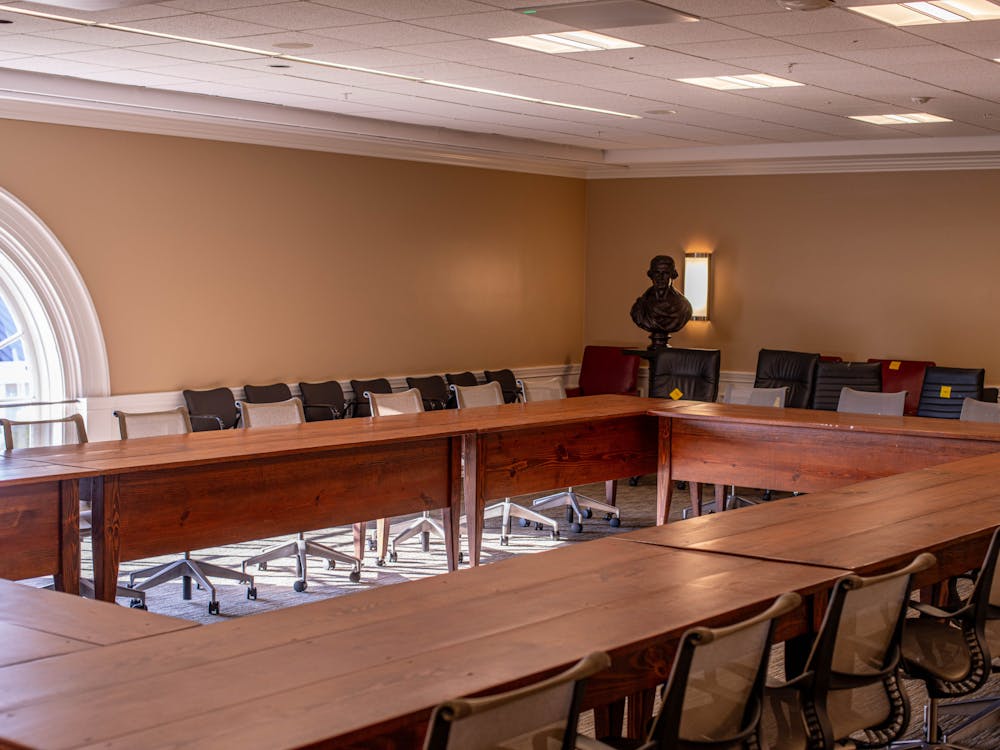Less than two months after passing new zoning regulations that would allow for high-density housing to be built near Grounds, City Council approved an ordinance at its Nov. 3 meeting designating many properties on the Corner as part of a new historic district.
The ordinance established protective status for most of the area east of Rugby Road between University Avenue and the railroad tracks, including commercial structures, residences, Madison House, St. Paul's Church and the Delta Upsilon fraternity house.
As part of the designation, property owners will have to obtain the approval of the city's Board of Architectural Review before making any changes to the exterior of a designated property, Council member Kevin Lynch said.
Though he said this requirement is intended to preserve the historical integrity of a protected area, some property owners have taken exception to this restriction. Earlier this year, as part of a six-month approval process, over 50 property owners met with City Council to voice their concerns about a potential designation, according to Little John's owner John Crafaik.
"I'm opposed to it because I'm opposed to government control," he said. "It requires you to give up significant property rights when this happens."
Crafaik added that he thought the historical label was being applied to many properties that do not fit that description.
"In my opinion, they're trying to designate as much of the city historic as they can," he said.
Vice Mayor Meredith Richards said she disagrees with the arguments against preservation of historical properties.
"There's ample evidence that these designations enhance the property values within the district and ensure that the historic context of the area is preserved," she said.
The Corner District had been previously recognized by the Virginia Landmarks Register and the National Register of Historic Places, designations which provide tax cuts in addition to state and federal funding for property improvements.
While the city offers additional funding resources for property owners, according to Lynch, it also places new restrictions on development, demolition and improvement.
Prior to Monday's ordinance, city council had designated five regions and several individual properties, including some on the Corner, as historical sites. The Downtown Mall was the first area to be protected under these provisions, followed by North Downtown, Ridge Street, portions of West Main Street and, most recently, Wertland Street.
The initiative to assign local protective status to more parts of the city was a part of goals laid out in council's 2000 Comprehensive Plan. Individual properties in each area under consideration for historical status are generally identified by an independent contractor, Richards said.
"I think the Corner is so identified with the University and its unique place in history that to ignore this would be an act of negligence on the part of City Council," she said.
Council approved the measure by a 4-1 margin, with sole Republican Council member Rob Schilling providing the dissenting vote.






